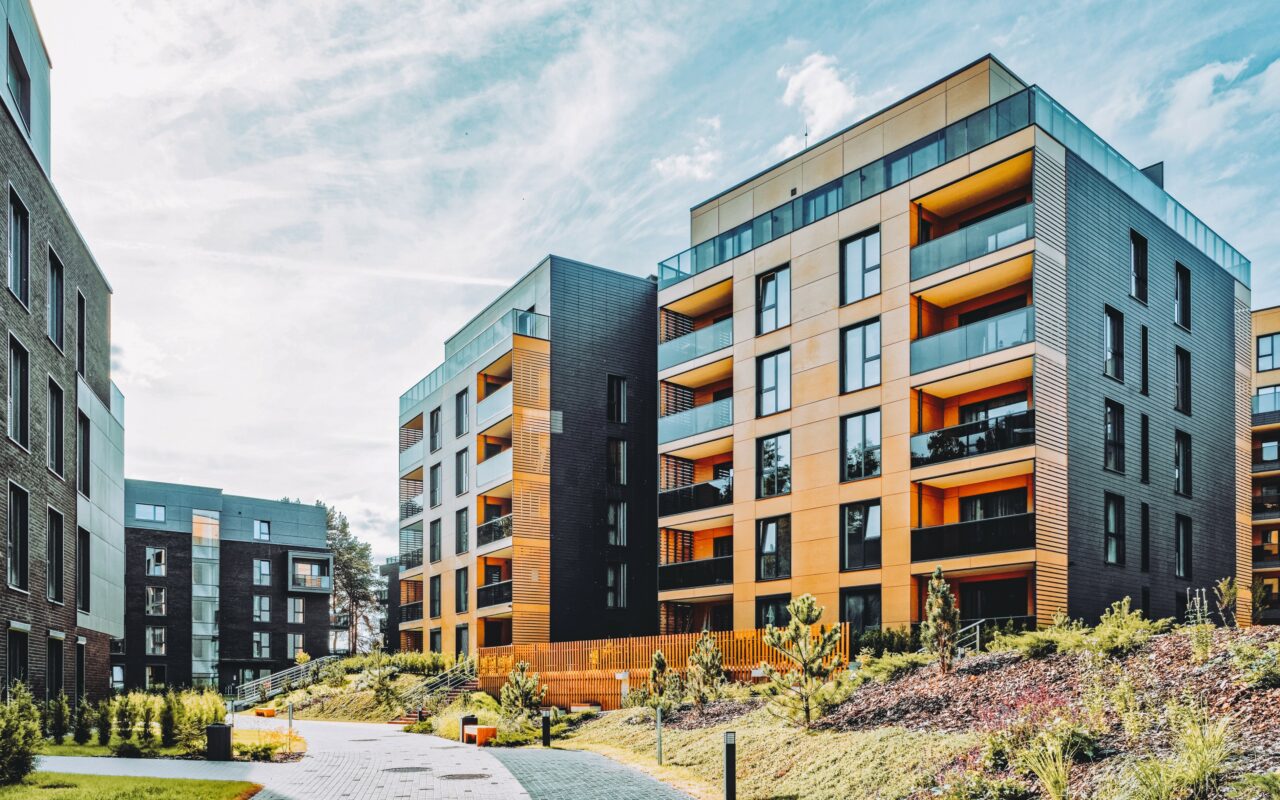Sustainability is a top priority for the construction industry as countries around the world race towards achieving net zero targets. According to the UK Green Building Council’s (UKGBC) Whole Life Carbon Roadmap, the construction industry is currently responsible for 25% of the UK’s total carbon footprint. These emissions include those from buildings and infrastructure.
If you’re looking to learn more about a green building certification system, read on. This blog post is going to focus on one such system – BREEAM – and talk about its benefits and grading system.
BREEAM Certification
The Building Research Establishment Assessment Method (BREEAM), introduced in the UK in 1990, was developed by BRE Global to ensure that buildings meet sustainability standards across design, construction and operation. It can be used for both new developments and renovation projects. Today this certification system is also used in countries including Norway, Spain, Sweden and the Netherlands.
For a building to be BREEAM certified, it has to be assessed by an independent BREEAM assessor, who takes into consideration a comprehensive list of factors including design, construction and operation, as well as materials, pollution, water and energy efficiency, wastage, and internal environment. The assessor then assigns a score based on the building’s performance.
In this system, the assessment begins right from the design stage of the building. The BREEAM assessor works closely with the building’s developers and designers to evaluate its environmental performance and highlight opportunities for improving it.
To ensure that the building stays on track with meeting the BREEAM criteria highlighted at the design stage, the assessor also conducts on-site inspections at different stages of the construction process.
The final assessment is carried out once the building is complete. This is when the building receives its final BREEAM rating.
Categories Assessed for BREEAM Certification
For a building to attain BREEAM certification, its performance in a wide range of categories is compared against the previously set BREEAM standards. The building’s performance in each category determines its overall grade.
BREEAM assessors look at these categories:
- energy efficiency – both overall energy efficiency and use of renewable energy for main functions, including lighting, heating and cooling systems, and other appliances;
- water efficiency – both the water efficiency of its fixtures and appliances and its ability to harvest rainwater and reuse greywater;
- materials – their environmental impact, based on embodied energy, durability and recycled content;
- waste management – including composting, recycling and reuse of materials;
- pollution – including the impact on the surrounding environment, such as air and water quality, based on its use of low-emitting materials and systems and its management of stormwater runoff;
- transport – how accessible it is by public transport and whether it supports the use of alternative transport modes such as cycling and walking;
- internal environment – including natural light, outdoor spaces and air quality.
BREEAM Grading System
Once the construction is complete and the BREEAM assessor has completed the final assessment, the building receives a BREEAM-certified rating based on its performance against the BREEAM benchmarks.
Possible ratings are:
- Unclassified – a score lower than 30%
- Pass – a score higher than 30%
- Very Good – a score higher than 55%
- Excellent – a score higher than 70%
- Outstanding – a score higher than 85%.
Benefits of BREEAM-Certified Buildings
The three most prominent benefits of being BREEAM certified are:
Cost benefits
BREEAM-certified buildings are cost-effective, compared to other buildings. This is mainly because water and energy consumption is regulated for efficiency and heating systems are designed to optimise energy usage.
Health benefits
BREEAM-certified buildings are designed to the highest safety standards, as well as to optimise thermal performance, maximise enjoyment of daylight and other amenities, and make it as easy as possible to access the building and manage and maintain comfort levels while in the building.
Environmental benefits
In line with the main point of the BREEAM system, BREEAM-certified buildings offer enormous environmental benefits – reducing overall waste for the construction industry, reducing the building’s carbon footprint, helping wildlife by minimising damage to the surrounding environment and creating a sustainable future.
To learn more about MyDek’s sustainability performance, please get in touch with our team.

